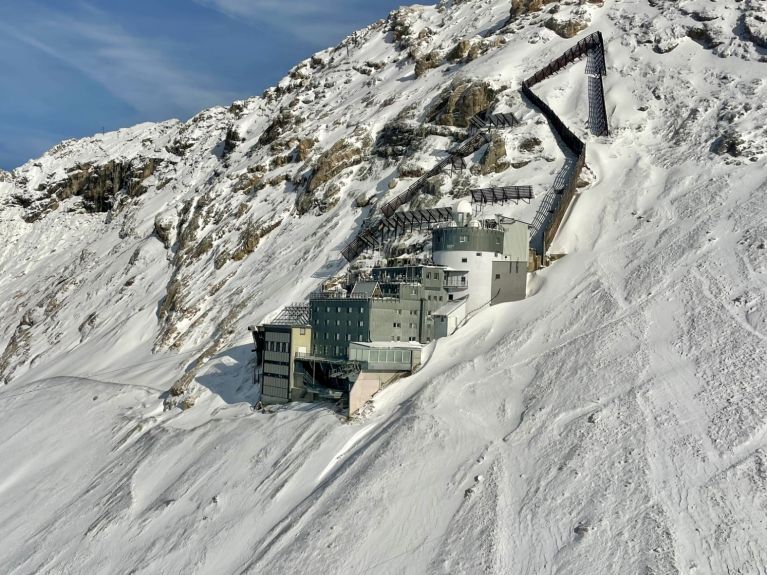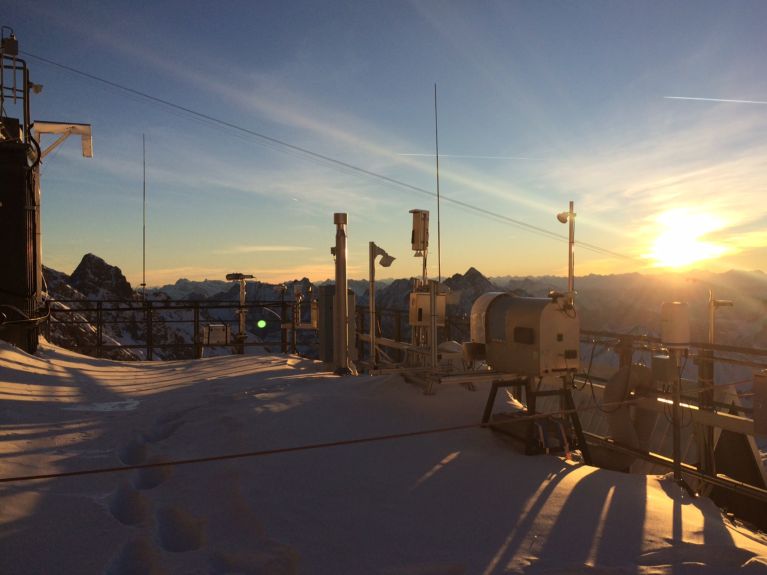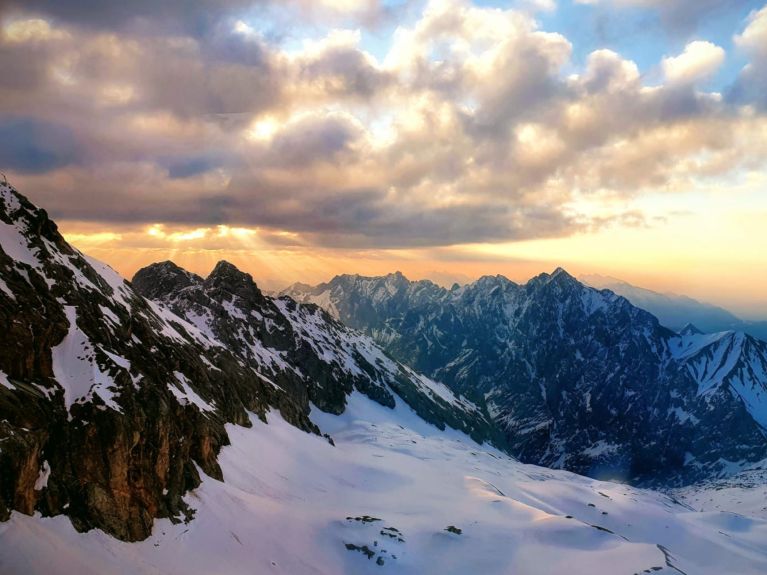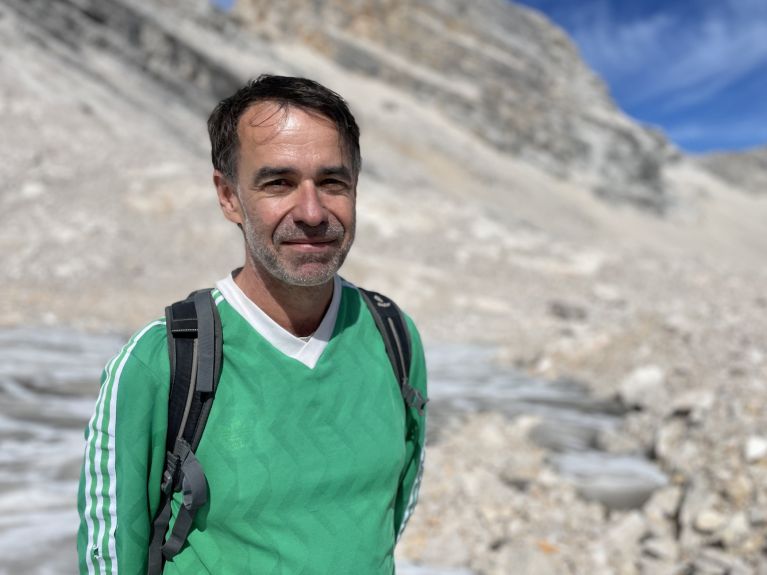Research summit
The Alps offer more than just an idyllic mountain setting: an insight into the work of Germany’s highest environmental research station.

Till Rehm has a very unusual workplace - in the heart of the Alps at an altitude of 2,650 metres. Germany’s highest environmental research station - the Schneefernerhaus - is located just below the summit of the Zugspitze. And that’s where the geophysicist has been working for 17 years. Ten research institutions work here permanently, including the German Aerospace Center and the German Weather Service. Among other things, they conduct research on hydrology, environmental and high-altitude medicine, cosmic radiation and radioactivity. Rehm is their first point of contact and looks after their equipment and measurement instruments. “The researchers should have access to their data around the clock, even though most of the time they are not on site themselves,” is how he describes his job.

Just getting to the Schneefernerhaus - by cable car - is quite an experience. It is above all the weather that can make life difficult, however: when sensors and equipment get buried under extreme amounts of snow, it is Till Rehm’s job to get everything back up and running.

For researchers who don’t work on site at the Schneefernerhaus, its staff are a valuable source of information. Because they spend a lot of time in the Alps, they can observe directly how the environment is changing. For Wilfried Hagg, a geography professor at Munich University of Applied Sciences, they are for example important witnesses. Hagg is researching glacier shrinkage: “Sadly, the four glaciers in Bavaria are doomed. They are no longer able to achieve any equilibrium in today’s climate, so their disappearance is only a question of time. We will probably lose the last glaciers at the start of the next decade, at the latest.” The geographer is exploring the factors that could accelerate or indeed slow down the shrinkage. And he emphasises the value of protecting glaciers:
glaciers increase biodiversity, are important water stores - and are beautiful to look at. That’s why they should be preserved.
Glaciers store large amounts of water that they slowly release during the warmer season. The disappearance of glaciers poses a threat to the supply of water for millions of people all over the world. In 2025, the United Nations (UN) is therefore raising awareness about the state of glaciers - with an International Year of Glaciers’ Preservation.



